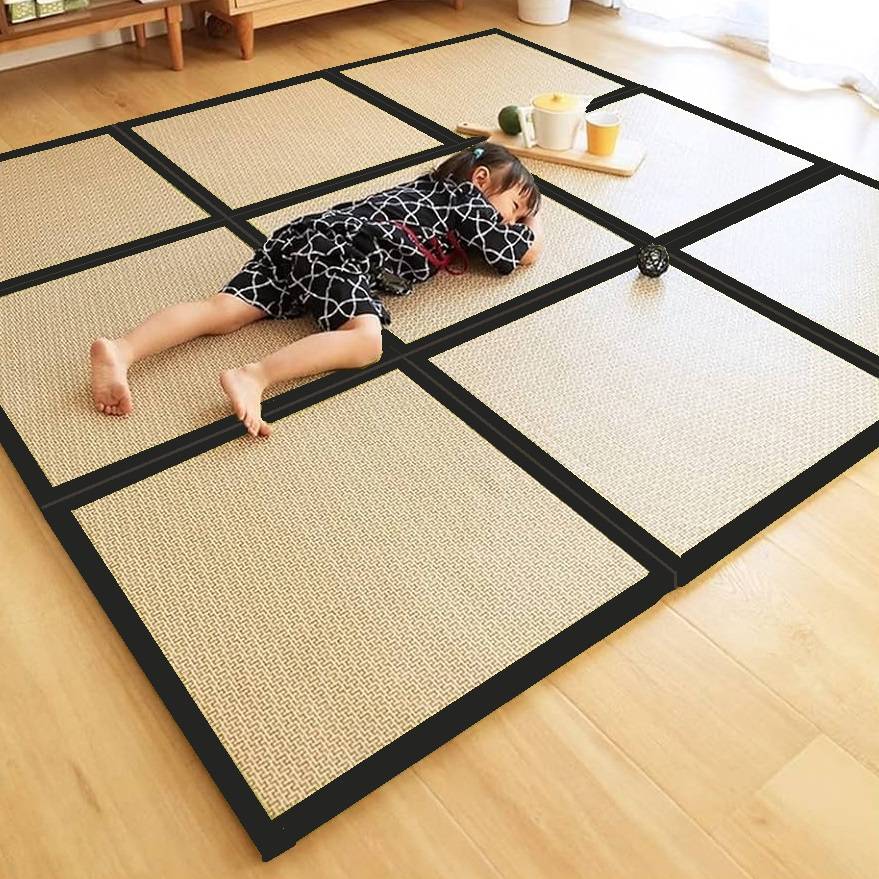Your cart is currently empty!
A Guide to Japanese-Style Bed Frames: Beyond Tatami
Japanese-style bed frames are known for their simplicity, functionality, and close connection to nature. While Tatami beds are the most well-known, there are several other types of Japanese bed frames that reflect the same minimalist and practical design philosophy. In this guide, we’ll explore various Japanese-style bed frames and compare them with traditional metal bed frames, helping you choose the best option for your needs.
1. Popular Types of Japanese-Style Bed Frames
Tatami Bed Frame
Tatami bed frames are low-platform beds featuring a woven straw mat surface, creating a firm yet comfortable sleeping space. They often don’t require a mattress and are ideal for those who prefer a more natural sleeping experience.
🔹 Pros: Eco-friendly, breathable, regulates humidity, and promotes good posture.
🔹 Cons: Requires maintenance, absorbs moisture, and can be firm for some users.
Futon Bed (Shikibuton)
A Shikibuton is a traditional Japanese foldable mattress that is placed directly on the Tatami mat or floor. Unlike Western beds, it doesn’t need a frame, making it a space-saving solution. During the day, it can be folded and stored away.
🔹 Pros: Lightweight, easy to store, great for small spaces.
🔹 Cons: Less cushioning, requires regular airing to prevent moisture buildup.
Low Wooden Platform Bed
Japanese minimalism extends to their bed frames, with low wooden platform beds being a popular choice. These beds often feature solid wood construction, clean lines, and a sturdy design, complementing modern Zen-style interiors.
🔹 Pros: Durable, aesthetically pleasing, and blends well with various interiors.
🔹 Cons: Slightly heavier than metal frames, may be pricier.
Kagu Bed Frame (Storage Bed)
A Kagu-style bed frame integrates built-in storage drawers beneath the sleeping area. It maximizes space efficiency, aligning with Japan’s compact living culture.
🔹 Pros: Saves space, provides additional storage, and keeps rooms tidy.
🔹 Cons: More complex assembly, may limit airflow under the mattress.
2. Japanese-Style Bed Frames vs. Metal Bed Frames
| Feature | Japanese-Style Bed Frames | Metal Bed Frames |
|---|---|---|
| Material | Wood, bamboo, tatami mats | Steel, iron |
| Design | Minimalist, low-profile | Classic, industrial, or modern |
| Comfort | Natural and firm support | May require a mattress topper for comfort |
| Durability | Long-lasting, eco-friendly materials | Sturdy but may creak over time |
| Maintenance | Needs proper care (tatami requires airing) | Generally low maintenance |
| Space Efficiency | Some models offer storage | Usually open space underneath |
Japanese-style bed frames offer a blend of tradition, functionality, and elegance. Whether you opt for a Tatami bed, a Shikibuton setup, or a wooden platform bed, they all provide a comfortable and space-saving alternative to traditional metal bed frames.

Leave a Reply